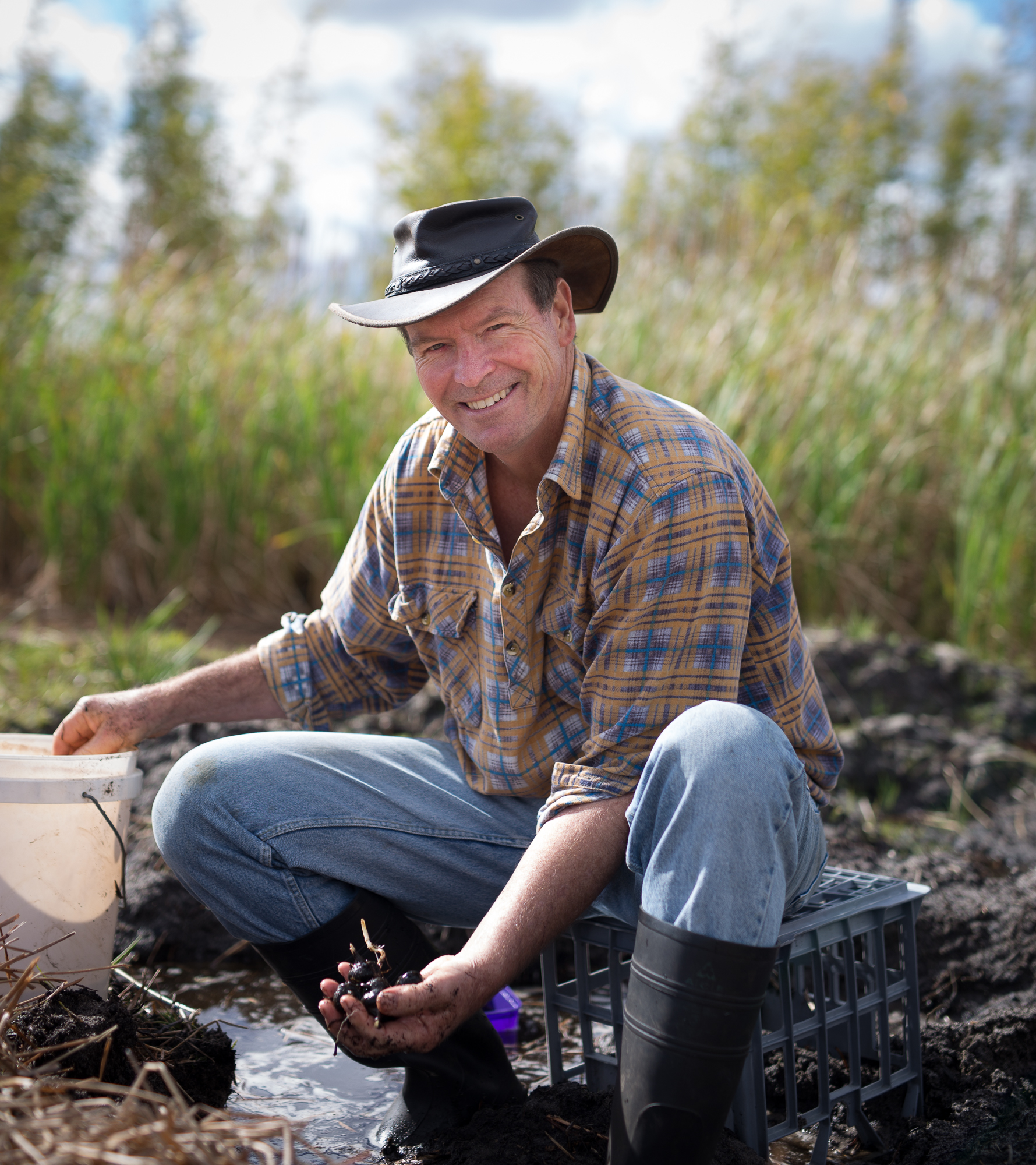When Peter Jones and his family bought a twice-failed yabby farm in Muckenburra in 2003, the many large, cracked, concrete ponds cried out for some kind of re-use. With this in mind, while setting up his new farm as a bamboo plantation to produce culinary shoots and timber, Peter asked his oldest son Karl to research plants that offered cropping potential in an aquatic or semi-aquatic environment. One week later Karl announced that he’d found the ideal plant for the ponds – Chinese water chestnuts! Peter immediately latched onto the idea of growing water chestnuts, since it seemed the perfect crop to complement his bamboo shoot production, with both crops being predominantly aimed at the Asian food
market, with similar storage and distribution needs.
After initially procuring a few small corms to grow-on in pots in one of the many yabby ponds – by now was an enormous goldfish pond, in one season Peter had enough corms to plant out an entire pond area of 128 sqm. The crop grew surprisingly well and Peter and his family, now with several hundred kilograms of corms to harvest, supplied samples of the big first crop of their exotic corms to various Asian supermarkets and wholesale markets around Perth. Much to their disappointment, the samples generated little interest; no orders were received and zero sales were made. At this point Peter had to choose between pursuing the unknown territory of water chestnut production, or the burgeoning bamboo nursery/landscaping market. “Naturally, I chose bamboo, but I continued to grow water chestnuts for friends and family.” he said.
Then, quite out of the blue, in 2012, Peter received an enquiry from a well-established Sydney-based distributor of Asian foods, who also supplied top-end Asian restaurants in Sydney and Melbourne. After sampling Peter’s water chestnuts and claiming they were the best he’d ever tasted, he sought exclusive distribution rights in the eastern states for Peter’s next three crops.
Chinese water chestnut, (Eleocharis dulcis), is classed as a semi-emergent aquatic plant and is in the sedge family with rush-like tubular reeds that grow to 1.5 metres or more. The mahogany brown corms, which look like the tree chestnuts after which they are named, develop in the submerged soil of a marsh or pond. They are renowned for their crunchy texture and firm, white flesh, with a flavour somewhere between apple and coconut.
As far as actually growing water chestnuts is concerned, it seems to be hands-on and muddy work. “There’s a lot of work inside the pond at both plant-out and harvest time, but it’s a fairly flexible crop so I stagger these activities to allow me time to attend to my bamboo and fish operations.” Peter said. Although he would usually have his teenage children and their friends employed in the harvest of the water chestnuts, so far this season Peter has done it alone. “By the time I’ve finished harvesting next month, up to 10 cubic metres of soil will have passed through my fingers as I feel for corms!’ he laughed. “It’s actually very therapeutic.”
Peter is optimistic about the future of of his water chestnut business. “If I can find a large enough market, perhaps in an Asian country during its off-season, then I would be able to expand my water chestnut operation by 10-fold in the space of one season; I already have the infrastructure!”
While the harvesting season lasts, and for a month or so longer, Peter’s water chestnuts will be available directly from his farm in Muckenburra, as well as from his stalls at Mt Claremont Farmers Market and at the new Wireless Hill Farmers Market, where he trades under the banner of Western Produce.








